Phoenix Deer Valley Airport (DVT)
Deer Valley Airport (DVT) is a predominantly business, and general aviation airport. It boasts a large permanently based aircraft population. Located approximately 17 miles north of Phoenix Sky Harbor it is a convenient alternative to the larger and more congested airport. This convenience has led DVT to become one of the busiest general aviation airports in the country. DVT is home to several high activity flight schools, which, along with the large number of itinerant aircraft, results in an extremely busy air traffic environment. View a printable Pilot Handbook of the DVT information found on this web page.
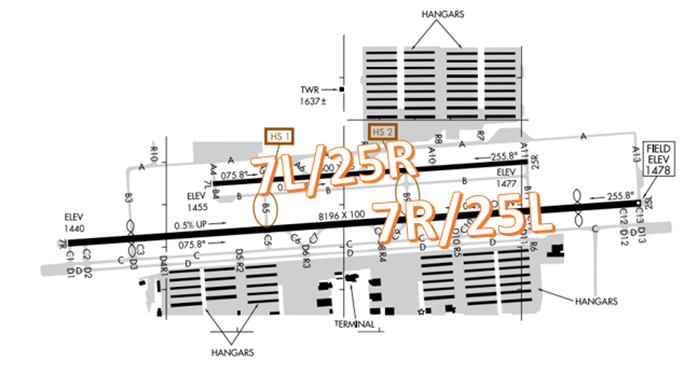
Know Before You Go
The RWY configuration consists of closely spaced parallel RWYs 7L/25R and 7R/25L.
The airspace at DVT is Class D and underlies PHX Class B. (Refer to Sectional Chart)
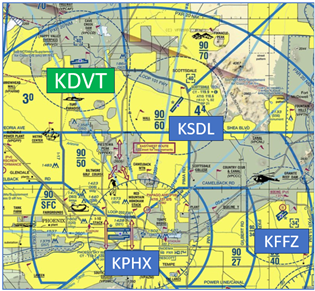
Below find various DVT-specific information and things to be aware of, as well as general information to inform your preflight planning. This will be reviewed quarterly and updated as needed. This information is to supplement the From the Flight Deck Videos that are produced by the FAA Runway Safety Group. Here you will also find information provided by the local air traffic controllers at the airport where you intend to fly. The information is subject to change. Not for navigation or legal* pre-flight action. Always refer to official pre-flight materials such as, but not limited to, NOTAMs, airport diagrams, VFR charts and airport construction notices for the latest airport-specific details.
DVT ATCT operates 0600L-0000L
Administrative Office Open 0800L to 1700L M-F
Business Phone 623-581-1492
Hot Spots
HS 1 Pilots sometimes cross RWY 7R/25L at TWY B5 without ATC clearance.
HS 2 Pilots sometimes cross RWY 7R/25L at TWY B9 without ATC clearance
- Both Hotspots have essentially the same issue-pilots have failed to hold short at the proper locations between the parallel RWYs.
- When instructed to hold short of a RWY, there may not be enough space between the parallel TWY and the RWY Hold Short marking for your aircraft to completely clear the parallel taxiway.
- Be aware that the TWR understands and expects this and plans accordingly.
- Do NOT cross the RWY Hold Short line with any part of your airplane until cleared by TWR to do so.
- Pilots exiting the RWY must pull forward far enough to cross the RWY Hold Short marking to ensure that your aircraft is completely clear of the RWY behind you.
- This may require you to enter the parallel TWY. Be aware that the TWR understands and expects this and plans accordingly.
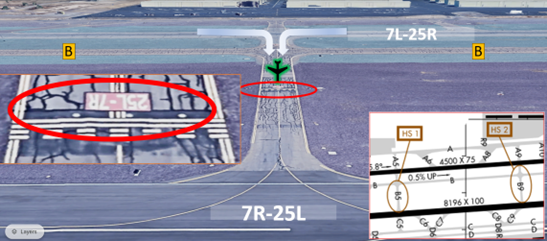
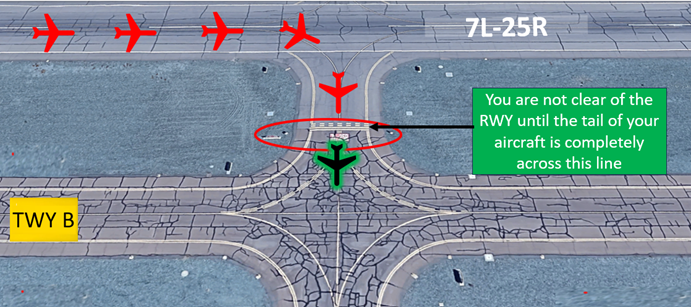
Wrong Surface Landing Risk
- Pilots sometimes confuse RWY 25L/25R and RWYs 7R/7L as well as parallel TWY B. See Arrival Alert Notices.
- The RWYs are closely spaced however, RWY 7R/25L is over 3500’ longer, one-fourth wider, and has displaced thresholds on both ends.
- Expectation bias may lead aircraft on downwind for RWY 7L/25R to attempt to land on RWY 7R/25L because it comes into sight first.
- To help pilots identify the correct RWY at DVT, the RWYs and TWYs are surrounded and bounded by different colored rock. The rock around RWY 7R/25L is red while the rock around the north RWY 7L/25R is green.
- Whenever a TWY runs parallel to a RWY, the risk of landing on a TWY increases.
- If available, back up all visual approaches with an instrument approach to help ensure that you are lined up for the correct surface.
- View the From the Flight Deck-Wrong Surface Landings video for additional mitigation strategies.
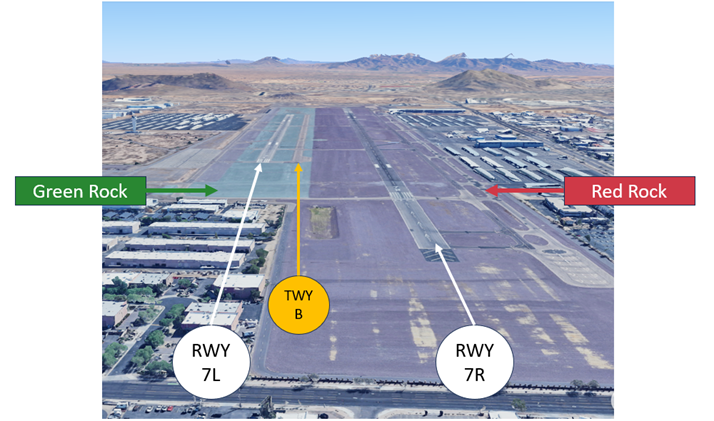

General
- Migratory birds on and in vicinity of airport in March, April, September, and October.
- Ramp and Taxi-Lane adjacent to the commercial air carrier terminal building is limited to commercial air carrier and passenger air-taxi aircraft only.
- Intensive pilot training area, exercise extreme vigilance within 20 NM.
- Aerobatic practice area approximately 8.5 miles NW of DVT from surface to 6,000’ MSL.
Traffic Patterns
- RWY 7R and RWY 25R are right traffic patterns.
Ground Control
- Parallel TWYs C and D on the south side of the airport are closely spaced and may be mistaken for each other. Normally, TWY D is used for outbound traffic and TWY C is used for inbound traffic.
Takeoff/Departure
- DVT utilizes “Line Up and Wait” (LUAW) to instruct a pilot to taxi onto the departure runway and hold position until cleared for takeoff. It is not authorization for takeoff. For mitigation strategies, view the From the Flight Deck-Line Up and Wait video.
Approach Control
- VFR aircraft executing practice instrument approaches will be provided IFR separation to the extent possible By Phoenix Approach Control. Review NOTAMS for the Letter to Airmen LTA-P50-57 for more detailed information.
Arrival/Landing
- When issued take-off/landing clearances readback runway assignments and hold short instructions with callsign.
- Pay close attention to parallel runway assignments and read back right or left with the instructions given by tower/approach.
Closely Spaced Parallel RWYS
- Pilots navigating the airspace should consider the following when approaching the downwind, upwind, base, and final legs:
- Wind (tail or crosswind).
- Distance between parallel runways. Deer Valley Runways are 700 feet apart, centerline to centerline. The closer the parallels, the more critical the need for a ground track that does not overshoot the assigned runway extended centerline or drift into the parallel upwind during departure leg.
- Aircraft performance.
- Aircraft speed.
- Avoid Distraction.
- Listen and scan. Know the location of other traffic. Turning base to final can place the belly of the aircraft between your eyes and aircraft on the parallel final.
- If you overshoot final, communicate with ATC and consider initiating a go around.
- Stay very vigilant when extending downwind and upwind.
- If you are unsure, always verify any instructions with ATC.
- Plan ahead, get to know the airspace and airport layout.
- Pilots should review NOTAMS for the Letter to Airmen LTA-DVT-4 “Parallel Runway Close Proximity High Volume Operations” for specific facility guidance.
Special Traffic-Helicopters
- VFR helicopters will be instructed by Approach Control to enter a boundary of the airport (East/West/North/South). After being switched to the tower, helicopters should advise the tower where they are parking and expect a clearance or landing advisory shortly after.
- Hot air balloon operations N, NE, and NW of airport.
